Almost unnoticed, a team of Czech climbers has accomplished what many before them could not—they solved one of the most stubborn challenges in the Karakoram. Zdenek Hak, Radoslav Groh, and Jaroslav Bansky have successfully reached the summit of Muchu Chhish, the highest unclimbed peak in the world.
Now back home, the climbers have shared a comprehensive report and breathtaking photos, documenting their extraordinary achievement.
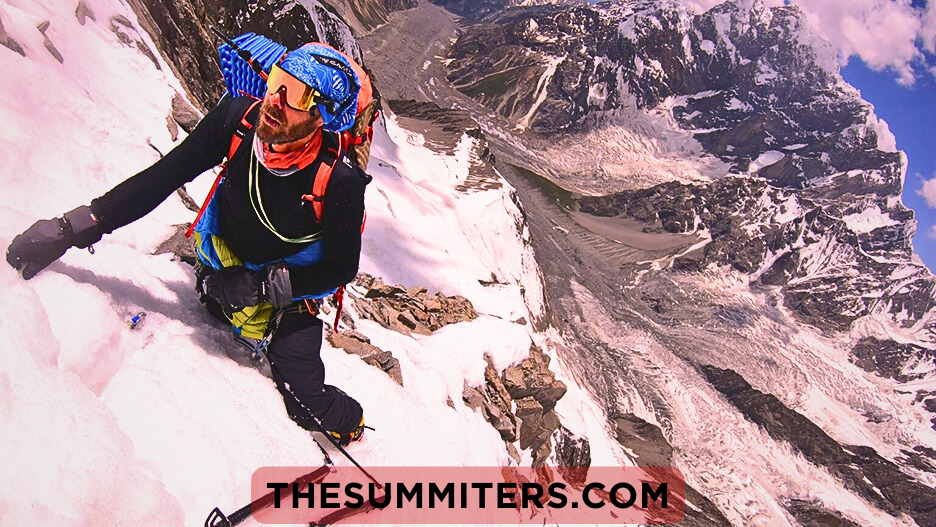
Ironically, Hak never planned to climb Muchu Chhish. His original goal was to lead an expedition to Afghanistan’s Hindu Kush, but those plans fell through. Then, Groh called with a new idea: why not tackle the 7,453-meter Muchu Chhish in Pakistan’s Batura Muztag range of the Karakoram?
This peak had been the lifelong dream of their fellow Czech climber, Pavel Korinek. Before making their final decision, they reached out to Korinek for his blessing. With his enthusiastic approval, Hak, Groh, and Jaroslav Bansky embarked on their journey to Pakistan on June 6.
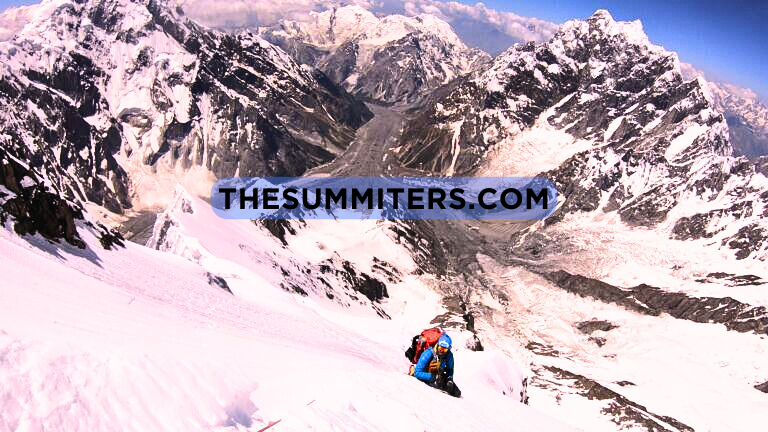
The trio initially planned to acclimatize on a nearby 6,000-meter peak, but Hak fell ill. “After a short break, we moved over the Muchuchar Glacier to base camp under Muchu Chhish itself,” Hak explained in his report to ExplorersWeb. We had no choice but to adjust right there.
Their acclimatization involved a challenging four-day climb from June 25-28. “We slept at 4,600 meters, 5,400 meters, and 6,100 meters,” Hak detailed. Except for the last camp, we followed the route of our planned ascent, which led along the south ridge up to 7,300 meters on the main ridge.
He admitted that this was far from ideal preparation, but they were out of time. The weather forecasts predicted a week of good weather, and they couldn’t afford to miss that opportunity.
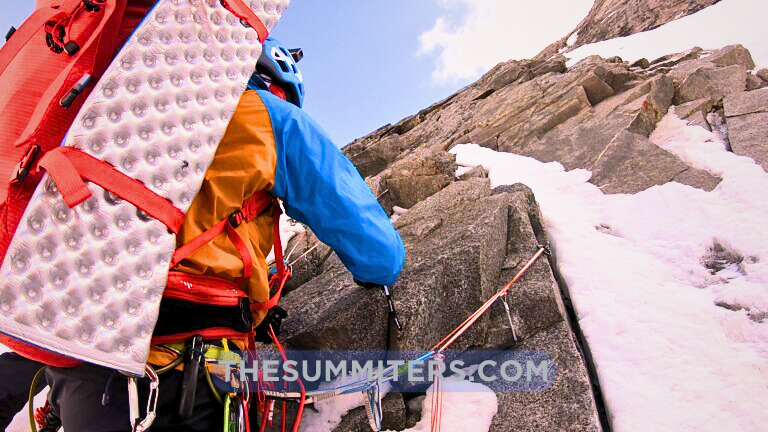
The final push began on July 1. Heres Hak’s account of the climb:
On the first day we ascended a rocky couloir to reach the glacier at 4800 meters then continued up to 5350 meters where we set up our first bivouac. We gained about 1400 meters in altitude that day and by 10:30 a.m.the heat was already intense.
The following day we launched the serious climbing. The initial sections involved a mix of rock and ice, with difficulties up to M4. As we progressed, it became an endless expanse of ice. We climbed diagonally up to 6,300 meters and established Camp 2 beneath a towering serac.
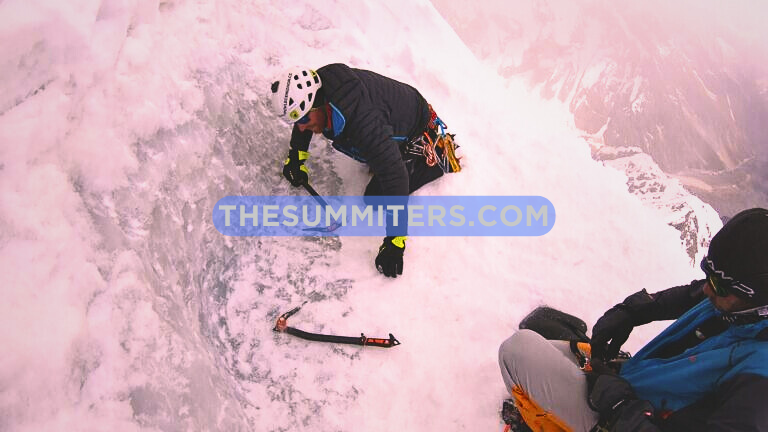
The third day proved to be incredibly strenuous, as we tackled steep snow-ice ramps with inclines of up to 70 degrees. The snow was so deep in places that we had to use special snowshoes from Auftriib, which fit between our boots and crampons. These were invaluable; without them, making any further progress would have been nearly impossible. By the end of the day, we had gained 500 hard-earned vertical meters and reached our bivouac site at 6,750 meters.
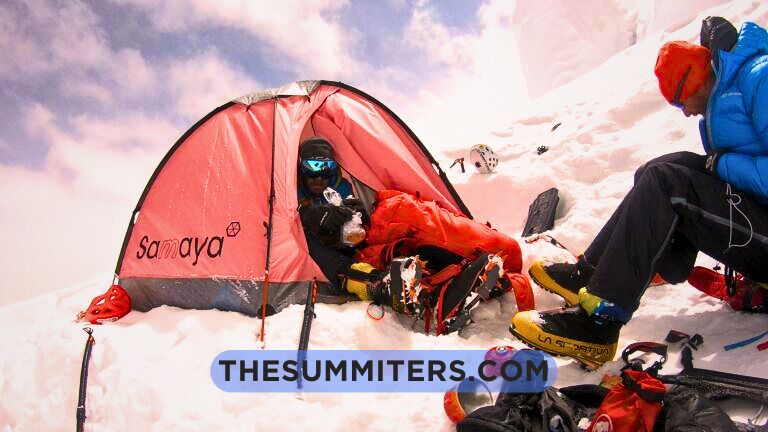
The following day presented another 500 meters of climbing on less steep terrain. We had to carefully choose our path through the crevasses, relying on our snowshoes and with Bansky leading the way and breaking trail for most of the climb.
By early evening, we set up our fourth bivouac at 7,250 meters, just below the summit ridge. While snow fell during the night, the skies cleared by the morning of July 5. This allowed us to leave the tent and some of our gear behind as we made our final push toward the summit, which lay 1,500 meters to the west.
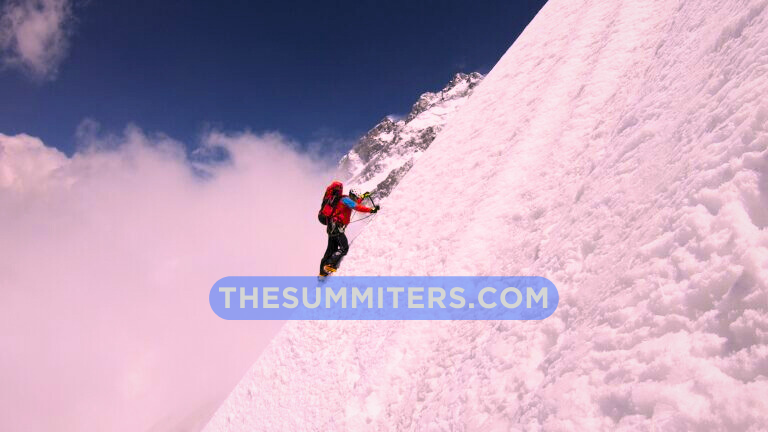
After the first 150 meters, the terrain became steeper again, leading us to a large rock tower just below the headwall. There were still another 150 vertical meters to conquer before reaching the summit. Bansky once more took charge and expertly led us to the top at 10:20 a.m. local time. We had finally reached the highest point—there was no higher ground around. To commemorate our achievement, I left a snow anchor with our signatures and a message that read ‘Muchu Chhish – Krkonoše Expedition.’

Their descent was grueling, made even more difficult by a whiteout and the wind that had obscured their tracks. Several times, they had to backtrack and retrace their steps, trying different routes until they finally found the correct path down. This exhausting process consumed most of their remaining energy.
“We were lucky to come across a rocky corner that guided us back to our tent,” Hak wrote. “We didn’t linger there; we quickly resumed our descent.”
As the weather deteriorated further, they continued in a complete whiteout. Hak had to remove his goggles to avoid crevasses, relying on his habit of carefully studying the terrain and remembering physical landmarks.
“This practice has been invaluable for me in similar situations,” Hak observed.

“Visibility improved once we dropped below 7,000 meters, making it easy to return to our previous bivouac site at 6,750 meters,” Hak said.
With forecasts predicting worsening weather, they set out very early the next day. They quickly descended 1,500 vertical meters to the glacier.
“By noon, the heat was intense, and avalanches were cascading all around us,” Hak reported. The glacier route didn’t look safe, but we decided to continue our descent.
Fortunately, the weather held up for the day. Despite taking some risks, they proceeded with caution and reached Base Camp by late afternoon.
The next day, rain began as they packed up and hiked back toward the village of Aliabad.